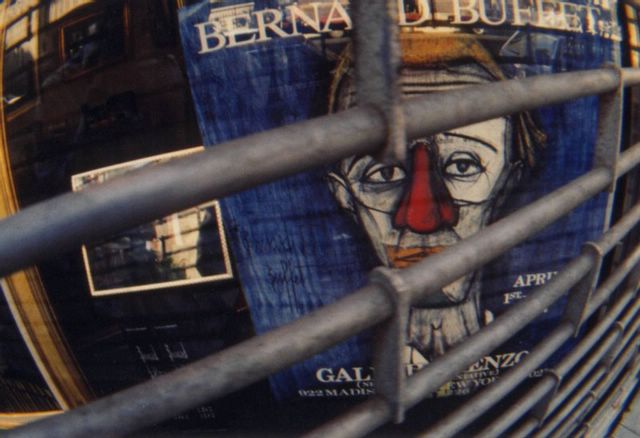A continuing paradox is that the destruction of the Buddhas has in a way aided archaeologists in their investigations. For example, carbon dating of fragments of the plaster surface of the Buddhas was able to pinpoint the construction of the smaller one to 507, and the larger one to 554. Previous estimates had varied over 200 years.(I've probably watched entirely too many bad Sci-Fi movies, because all I can think about is how bad it would be if the Chrysler Buddha suddenly came to life and started killing people...)
The Buddhas were only roughly carved in the rock, which was then covered in a mud plaster mixed with straw and horsehair molded to depict the folds of their robes and then painted in bright colors. Workers have recovered nearly 3,000 pieces of the surface plaster, some with traces of paint, as well as the wooden pegs and rope that were laid across the bodies to hold the plaster to the statue. The dryness of Afghanistan’s climate and the depth of the niches helped protect the statues and preserve the wood and rope.
The larger Buddha was painted carmine red and the smaller one was multicolored, Mr. Melzl said.
The most exciting find, he added, was a reliquary containing three clay beads, a leaf, clay seals and parts of a Buddhist text written on bark. The reliquary is thought to have been placed on the chest of the larger Buddha and plastered over at the time of construction.
(...)
One cave... so blackened by soot from camp fires that the Taliban and looters passed it by, has revealed fine paintings of tiny animals — a lion and a wild boar, a monkey, an ox and a griffin — rare in Buddhist art, but characteristic of Bamiyan, which combines Indian, Iranian and Gandharan influences.
(...)
The Chinese monk Xuan Zang visited Bamiyan in 632 and described not only the two big standing Buddhas, but also a temple some distance from the royal palace that housed a reclining Buddha about 1,000 feet long. Most experts believe it lay above ground and was long ago destroyed.
But two archaeologists, Zemaryalai Tarzi of Afghanistan and Kazuya Yamauchi of Japan, are busy digging in the hope of finding its foundations. Mr. Tarzi, who excavated a Buddhist monastery this year, may have also found the wall of the royal citadel that could lead the way to the third Buddha. He plans to return next year to continue digging.
There's also some talk about restoring the Buddhas, but given the hefty price tag and the country's many more urgent needs, it's not likely to happen. And the even-more-expensive "$64 million sound-and-laser show starting in 2009 that would project Buddha images at Bamiyan" idea just sounds stupid.

2 comments:
As a Buddhist myself, I think I can pretty conclusively say that a "$64 million sound-and-laser show starting in 2009 that would project Buddha images at Bamiyan" is totally at odds with the teachings of Buddha. Can't we just leave the excess to the Pope? I hear he wears Gucci loafers, which kind of boggles my mind.
Hehe, well I'm a lifelong Buddhist too but I think the sound-and-laser show sounds so alarmingly hideous that it might actually be strangely transcendentally absurd. If you've traveled much in Third World Asia you know those moments when you look around at what you're experiencing and not a goddamn thing makes sense but you know you're alive. Maybe it would be like that. ;-)
Okay, admittedly I think there are probably better uses for 64 mil in Afghanistan. But then what do I know.
Anyway, thanks for the link, Eli.
Post a Comment